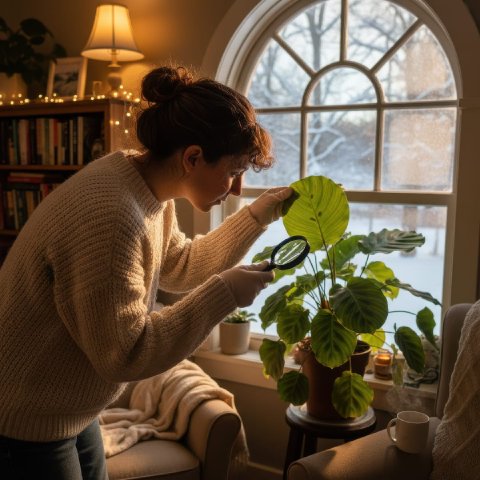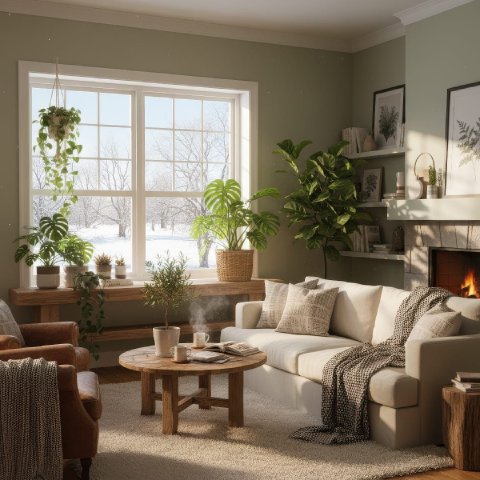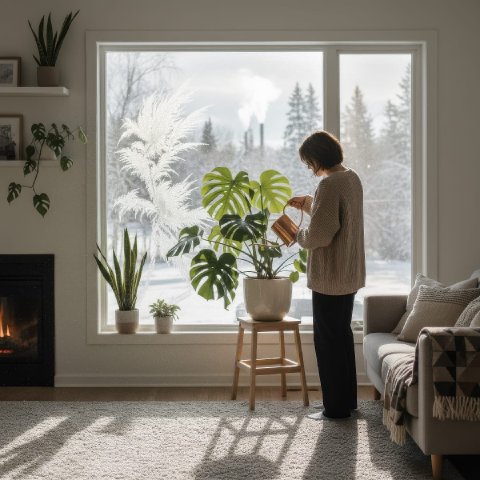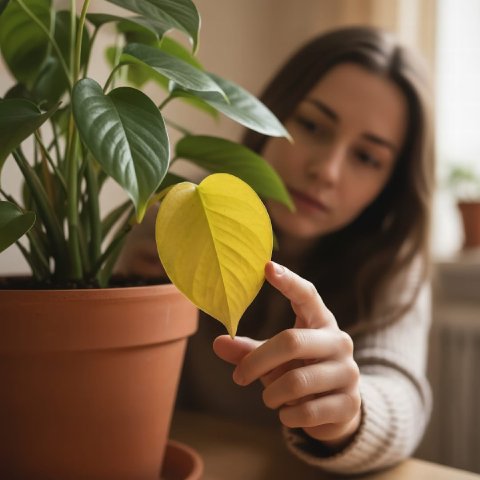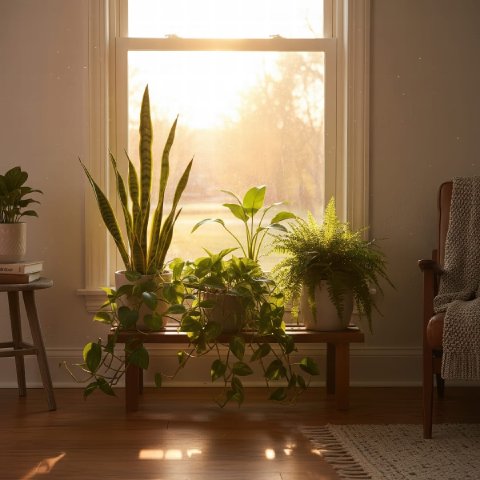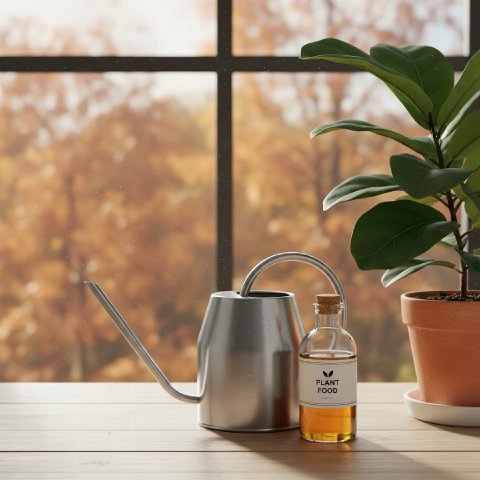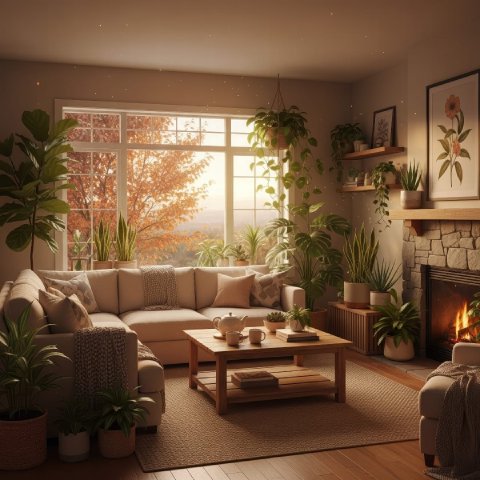🪴 In This Guide 🪴
🌡️ Why Humidity Drops So Much in Winter
Cold air holds less moisture, and once it’s warmed by your heating system, it becomes even drier. In many homes, humidity dips below 30%, while most tropical houseplants prefer around 50%.
That’s like moving them from a rainforest to a desert apartment overnight.
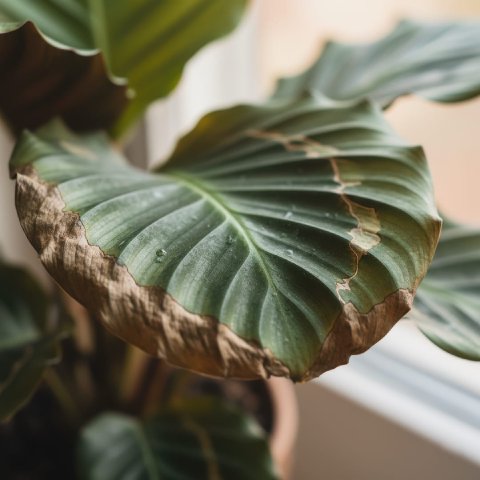
Not all plants mind. Succulents, snake plants, and ZZ plants are fine with dry air. But humidity-loving species like ferns, prayer plants, and anthuriums show distress fast-brown tips, curled leaves, or faded color.
The good news? You can fix this without fancy gear.
💧 Simple Ways to Add Moisture Back
Let’s go through the most effective and realistic methods to increase humidity for your plants this winter.
1. Use a Humidifier
It’s the easiest and most effective solution. Even a small tabletop model can raise humidity in a single room. Run it for a few hours a day near your plant shelf or display area.
If you use tap water, rinse the tank regularly to avoid mineral residue.
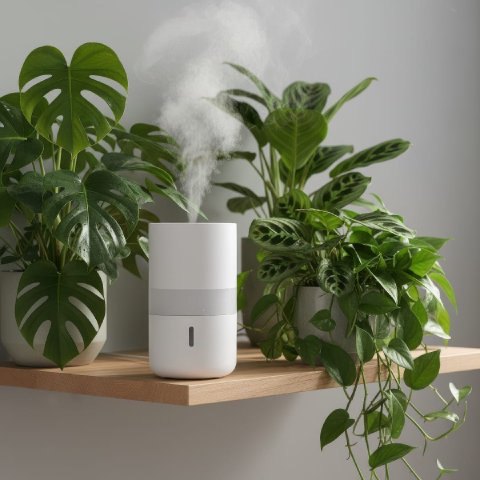
2. Group Plants Together
Plants release moisture through their leaves. When you group them close, that moisture builds up locally, forming a small microclimate that stays more humid than the rest of the room.
Think of it as teamwork-they help each other stay hydrated.
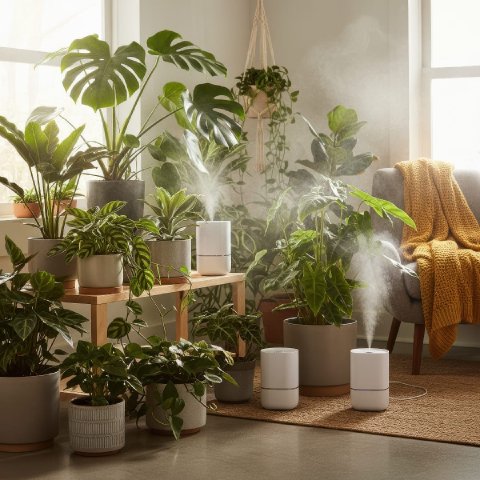
3. Try a Pebble Tray
Fill a shallow tray with small stones and add water just below the tops of the pebbles. Place your pot on top so it never sits in the water directly.
As the water evaporates, it raises humidity right around the plant’s base-simple but surprisingly effective.
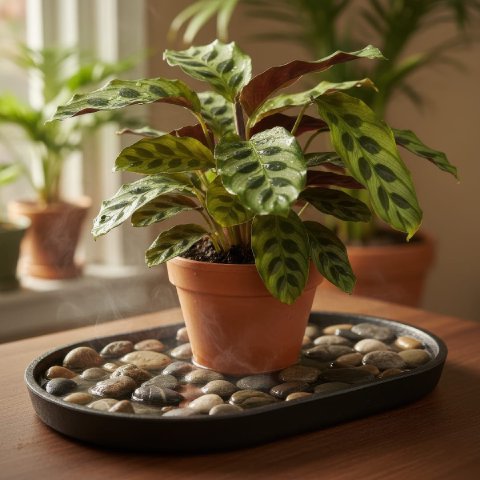
4. Move Plants to the Right Rooms
Bathrooms and kitchens tend to have higher humidity from showers and cooking.
If they get natural light, move moisture-loving plants like Boston ferns, Marantas, or orchids there for the season.

5. Skip Misting-Most of the Time
Misting feels helpful but does very little for the air’s actual humidity. The effect lasts just a few minutes.
It can even cause fungal issues on plants with fuzzy or delicate leaves. Keep misting for ferns if you enjoy it, but don’t rely on it for real results.
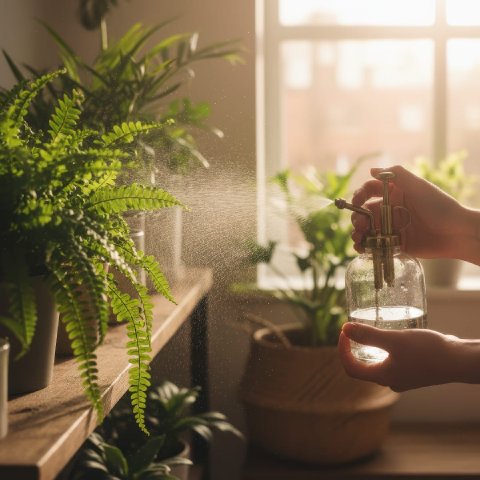
📈 How to Check If It’s Working
You don’t have to guess-use a digital hygrometer. It costs just a few dollars and tells you the exact humidity in the room.
If you keep levels between 40% and 50%, most houseplants will be happy. You’ll see fewer brown edges, perkier leaves, and steadier new growth.
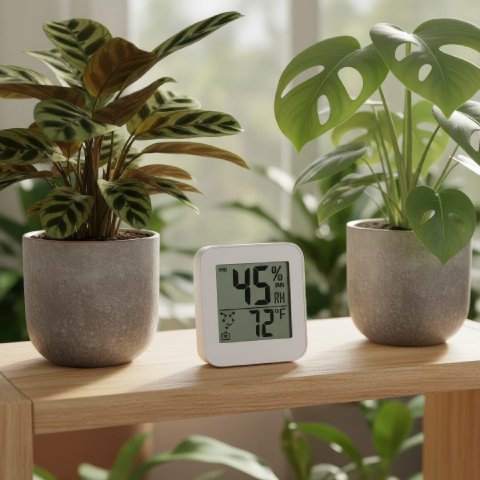
⚖️ Finding the Right Balance
Don’t overdo it. Some plants-Aloe, Jade, Haworthia-come from arid climates and prefer drier air.
For them, too much humidity can cause rot. Tailor your humidity boosts by room or plant type rather than running a humidifier all day.

Winter plant care is all about balance. Manage humidity, light, and watering together, and your plants will sail through the season looking as fresh as ever.
❓ Frequently Asked Questions
How can I tell if my home’s humidity is too low for plants?
Crispy leaf tips, curling leaves, and slowed growth usually mean humidity is under 40%. Use a hygrometer to check indoor levels.Are humidifiers safe to run around houseplants?
Yes. Run them for a few hours a day near your plants and clean them regularly to prevent mineral buildup.Does misting really help increase humidity?
Not much. It raises humidity for only a few minutes. A humidifier or pebble tray is far more effective.What humidity level should I aim for?
Most tropical houseplants prefer 40–50% humidity during winter.Can high humidity harm succulents?
Yes. Desert plants like Aloe and Haworthia prefer dry air. Too much humidity can cause root or leaf rot.📚 Related Reading
For a complete seasonal overview, check out our Winter Houseplant Care Checklist.
You might also like:
